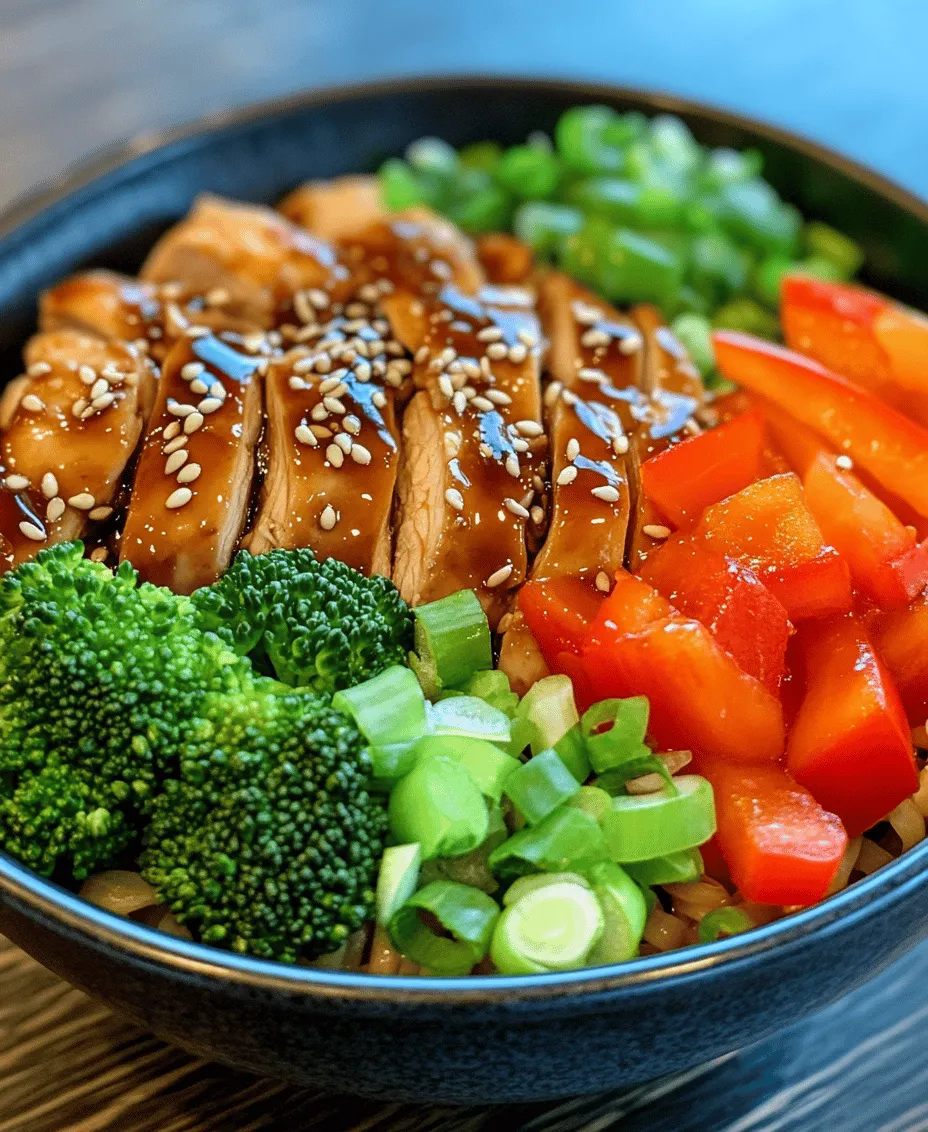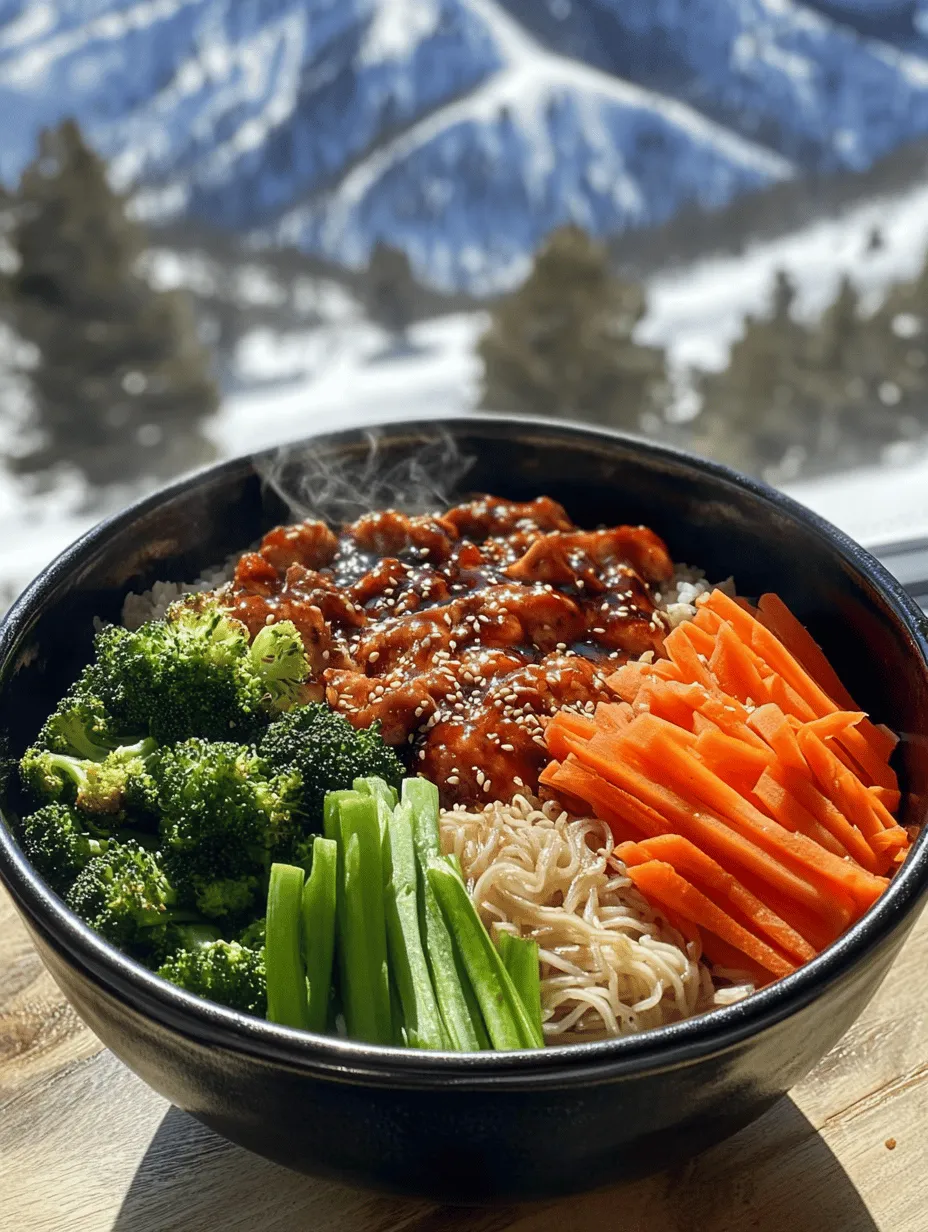Introduction
Chicken Teriyaki Noodles is a beloved dish that combines the savory flavors of teriyaki sauce with tender chicken and hearty noodles, creating a comforting and satisfying meal. This dish has gained immense popularity not only in Japanese cuisine but also globally, as it perfectly balances taste, texture, and nutrition. One of the standout features of this recipe is its quick preparation time, making it an ideal choice for busy weeknights when you crave something delicious without spending hours in the kitchen.
Homemade meals like Chicken Teriyaki Noodles are not just about taste; they also come with numerous benefits. First and foremost, preparing your meals allows you to control the ingredients, ensuring that you’re using fresh, wholesome components free from preservatives and excessive sodium. Furthermore, making this dish at home is often more cost-effective than dining out or ordering takeout. With just a few ingredients and simple steps, you can whip up a dish that rivals your favorite restaurant’s offerings.
Understanding Chicken Teriyaki Noodles
The origins of teriyaki sauce date back to Japan, where “teriyaki” refers to the cooking method of grilling or broiling food while basting it with a sweet soy sauce mixture. This technique not only enhances the flavor of the meat but also creates a beautiful glaze that is visually appealing. In the case of Chicken Teriyaki Noodles, the teriyaki sauce infuses the dish with a rich, savory sweetness that complements the other ingredients beautifully.
At its core, Chicken Teriyaki Noodles consists of four main components: chicken, noodles, vegetables, and sauces. The chicken serves as the primary protein source, providing essential amino acids necessary for muscle repair and overall health. The noodles, typically made from egg or wheat flour, serve as the hearty base for the dish, absorbing the flavors of the sauce and adding a satisfying chewiness.
In addition to chicken and noodles, vibrant vegetables such as broccoli, red bell pepper, and carrots are often included. These not only add color and visual appeal but also contribute various vitamins and minerals. Broccoli is known for its high vitamin C and fiber content, while red bell peppers are rich in antioxidants and vitamin A. Carrots are an excellent source of beta-carotene, which is crucial for eye health.
Garlic and ginger are also integral to this dish, enhancing the overall flavor profile while offering numerous health benefits. Garlic is known for its immune-boosting properties, and ginger aids digestion and has anti-inflammatory effects. The combination of these aromatics creates a fragrant base that elevates the dish to a new level.
For the sauces, teriyaki and soy sauce are essential. Teriyaki sauce is typically a blend of soy sauce, mirin (sweet rice wine), and sugar, giving it a sweeter and thicker consistency than regular soy sauce. Soy sauce, on the other hand, adds depth and umami flavor. There are various variations of teriyaki sauce available, from traditional to low-sodium options, allowing you to customize the flavor according to your preferences.
Lastly, a drizzle of sesame oil and a sprinkle of sesame seeds can add a delightful nutty flavor and texture to the dish. Sesame oil is rich in healthy fats and has been traditionally used in Asian cuisine for its aromatic qualities.
Ingredients Breakdown
Egg Noodles
Egg noodles are the backbone of this dish, providing a satisfying texture that complements the other ingredients. Typically made with wheat flour and eggs, these noodles have a slightly chewy consistency that holds up well to stir-frying. They cook quickly and absorb the flavors of the sauce beautifully, making them an excellent choice for this recipe. Look for fresh or dried egg noodles in your local grocery store, and choose according to your preference and availability.
Chicken Breast
Chicken breast is the primary protein in this recipe, offering a lean source of nutrients essential for maintaining muscle mass and overall health. When selecting chicken, look for boneless, skinless breasts, as they are easy to slice and cook evenly. For the best results, it’s important to slice the chicken thinly against the grain, which ensures tenderness in every bite.
Vegetables: Broccoli, Red Bell Pepper, and Carrot
The colorful trio of broccoli, red bell pepper, and carrot not only enhances the visual appeal of the dish but also provides a variety of nutrients. Broccoli is packed with vitamins C and K, making it a powerful antioxidant. Red bell pepper is known for its high vitamin C content and vibrant color, which adds sweetness and crunch. Carrots bring a natural sweetness and are rich in beta-carotene, which is converted into vitamin A in the body. Together, these vegetables contribute fiber, vitamins, and minerals that promote overall health.
Garlic and Ginger
Garlic and ginger are aromatic staples in Asian cuisine, providing depth of flavor and health benefits. Fresh garlic is known for its antimicrobial properties and can help boost the immune system. Ginger, with its warm, peppery flavor, is celebrated for its digestive benefits and anti-inflammatory effects. Minced or grated, these ingredients should be added early in the cooking process to maximize their flavor potential.
Teriyaki and Soy Sauces
These sauces are crucial for flavoring the dish. Teriyaki sauce provides a sweet and savory glaze that coats the chicken and noodles, while soy sauce adds a rich, umami flavor. You can find various brands of teriyaki sauce in stores, from traditional to gluten-free options. If you’re looking to cut down on sodium, low-sodium soy sauce is a great alternative without sacrificing flavor.
Sesame Oil and Seeds
Sesame oil is a flavorful addition that brings a nutty aroma to the dish. It’s rich in unsaturated fats, providing a healthy alternative to other cooking oils. Sesame seeds, when toasted, add a delightful crunch and enhance the visual appeal of the dish. They are also a good source of calcium, magnesium, and iron, making them a nutritious topping.
Step-by-Step Instructions
Cook the Noodles
Start by bringing a large pot of salted water to a boil. Add the egg noodles and cook according to the package instructions until they are al dente. The goal is to achieve a firm texture that will hold up during stir-frying. Once cooked, drain the noodles and rinse them under cold water to stop the cooking process and prevent sticking. Set them aside while you prepare the rest of the ingredients.
Prepare the Chicken
While the noodles are cooking, it’s time to prepare the chicken. Begin by selecting high-quality boneless, skinless chicken breasts. Pat them dry with a paper towel to ensure they sear properly. Slice the chicken into thin strips, ensuring that you cut against the grain for maximum tenderness.
To achieve a golden-brown sear, heat a tablespoon of oil in a large skillet or wok over medium-high heat. Once the oil is shimmering, add the sliced chicken in a single layer. Avoid overcrowding the pan, as this can lead to steaming rather than searing. Cook the chicken for about 3-4 minutes on one side before flipping it over and cooking for an additional 2-3 minutes, or until it is cooked through and no longer pink in the center. Remove the chicken from the pan and set it aside.
Add Vegetables
With the chicken cooked, it’s time to add the vegetables. In the same skillet, add a touch more oil if necessary, and toss in the minced garlic and ginger. Sauté for about 30 seconds until fragrant, being careful not to burn them. Next, add the chopped broccoli, sliced red bell pepper, and julienned carrots to the pan. Stir-fry the vegetables for about 3-4 minutes, or until they are tender-crisp.
Once the vegetables are cooked to your liking, return the chicken to the skillet and pour in the teriyaki and soy sauces. Stir everything together, ensuring that the chicken and vegetables are well coated in the sauce. Add the cooked noodles to the pan and toss gently to combine all the ingredients, allowing the noodles to absorb the flavors of the sauce.
With these initial steps complete, you’re well on your way to enjoying a delicious plate of Chicken Teriyaki Noodles. These simple yet effective methods will help you create a dish that is not only quick to prepare but also packed with flavor and nutrition. Keep reading to discover more tips for achieving the best results and answers to common questions regarding this delightful recipe.

Suggested Vegetables and Alternative Options for Customization
When preparing Quick and Easy Chicken Teriyaki Noodles, the choice of vegetables plays a crucial role in not only enhancing flavor but also adding essential nutrients and color to your dish. Consider using a mix of bell peppers, broccoli, snap peas, carrots, and green onions. These vegetables not only complement the savory and sweet teriyaki sauce but also bring a variety of textures and flavors to the dish.
For those looking for alternative options, feel free to customize based on your preferences or what you have on hand. For example, zucchini and mushrooms can add a different depth of flavor, while bok choy brings a lovely crunch. If you want to keep it light, incorporating leafy greens like spinach or kale can work well, as they wilt nicely and absorb the sauce.
Importance of Retaining Crunch in Vegetables for Texture Contrast
One key aspect that elevates your Chicken Teriyaki Noodles is the texture. Retaining a slight crunch in your vegetables not only enhances the overall mouthfeel but also provides a delightful contrast to the tender chicken and soft noodles. To achieve this, it is important to avoid overcooking your vegetables. A quick stir-fry for about 2-3 minutes should be sufficient to keep them vibrant and crisp.
Flavor the Dish
Role of Garlic and Ginger in Enhancing the Overall Flavor Profile
Garlic and ginger are quintessential ingredients in Asian cuisine, and they play a pivotal role in the flavor profile of your Chicken Teriyaki Noodles. Freshly minced garlic brings a robust aroma, while ginger adds warmth and a hint of spice. Together, they create a fragrant base that enhances the overall dish. When sautéing, add these ingredients at the beginning to allow their essential oils to infuse into the oil, releasing their flavors as the chicken cooks.
Mix in Sauces
How to Balance Flavors with Teriyaki and Soy Sauces, Adjusting to Personal Taste
The heart of any teriyaki dish lies in its sauce. Teriyaki sauce offers a perfect balance of sweetness and savory umami flavors. However, since everyone’s palate is different, it’s essential to adjust the sauce quantities to match your taste preferences. Start with a base amount of teriyaki sauce and soy sauce, then taste and modify as needed. If you prefer a sweeter dish, increase the teriyaki sauce; for a saltier profile, add more soy sauce. A sprinkle of sesame oil can also enhance the flavor, adding a nutty undertone that rounds out the dish beautifully.
Combine with Noodles
Techniques for Tossing Ingredients to Ensure Even Coating and Distribution
Once your chicken is cooked and the vegetables are perfectly tender-crisp, it’s time to combine everything with the noodles. Use a large skillet or wok to toss your cooked noodles into the pan with the chicken and vegetables. To ensure even coating, use tongs or two spatulas to lift and toss the ingredients gently. This technique helps the teriyaki sauce envelop every strand of noodle, ensuring each bite is packed with flavor. If the noodles seem dry, add a little more sauce or a splash of water to help everything come together.
Garnish and Serve
Visual Appeal of Garnishing and Serving Suggestions
Garnishing is not just for looks; it adds another layer of flavor and texture to your dish. For Chicken Teriyaki Noodles, consider topping with sesame seeds and finely sliced green onions for a fresh touch. Fresh cilantro or basil can also add a delightful aromatic quality. Serve your noodles in bowls or on plates, and add a few extra vegetables on the side for a pop of color. Not only does this enhance the visual appeal, but it also invites your guests to enjoy a well-rounded meal.
Nutritional Information
Overview of the Recipe’s Nutritional Content per Serving
One of the benefits of making Chicken Teriyaki Noodles at home is knowing exactly what goes into your meal. Typically, a serving of this dish contains around 450 calories, depending on the specific ingredients used. It usually offers a balanced mix of macronutrients, including approximately 25 grams of protein, 15 grams of fat, and 55 grams of carbohydrates.
Discussion of Calorie Count, Macronutrients, and Potential Dietary Modifications
For those watching their calorie intake or looking for healthier options, consider using whole grain or gluten-free noodles, which can increase fiber content and reduce the overall glycemic load. Additionally, you can substitute chicken with tofu or tempeh for a vegetarian option, maintaining a similar calorie count while catering to plant-based diets.
Tips for Customization
Suggestions for Ingredient Substitutions Based on Dietary Preferences
This dish is highly versatile and can easily adapt to various dietary preferences. If you prefer a vegetarian or vegan option, simply replace the chicken with tofu, tempeh, or seitan. For those avoiding gluten, opt for gluten-free soy sauce or tamari, and choose rice noodles or zucchini noodles instead of wheat-based options.
Ideas for Additional Vegetables or Proteins to Enhance the Dish
Get creative with your vegetable choices! Adding bok choy, asparagus, or even corn can introduce new flavors and textures. You can also experiment with different proteins, such as shrimp, beef, or even chickpeas, to keep things interesting.
Recommendations for Serving Sides or Complementary Dishes
To round out your meal, consider serving a side of steamed edamame or miso soup. A simple cucumber salad dressed with rice vinegar can also provide a refreshing contrast to the savory noodles.
Storing and Reheating Chicken Teriyaki Noodles
Best Practices for Storing Leftovers to Maintain Freshness and Flavor
If you find yourself with leftovers, store them in an airtight container in the refrigerator. They will typically last for about 3-4 days. To prevent the noodles from sticking together, consider tossing them with a little sesame oil before storing.
Instructions for Reheating Without Compromising Texture
When it’s time to enjoy your leftovers, reheat them gently in a skillet over medium heat, adding a splash of water or extra sauce to prevent drying out. Stir frequently until heated through, ensuring the vegetables retain their crunch and the noodles are evenly warmed.
Conclusion
Quick and Easy Chicken Teriyaki Noodles is a delightful fusion of flavors and textures that encapsulates the joy of home cooking. This recipe is not only simple to execute but also highly adaptable, allowing you to experiment with various ingredients and flavors. As you prepare this dish, take the opportunity to personalize it to suit your taste or dietary needs.
Cooking at home is not just about feeding ourselves; it’s about creating experiences and memories to share with loved ones. So, roll up your sleeves, gather your ingredients, and enjoy the process of making this delicious meal. Whether it’s a weeknight dinner or a special occasion, Chicken Teriyaki Noodles is sure to please. Happy cooking!

